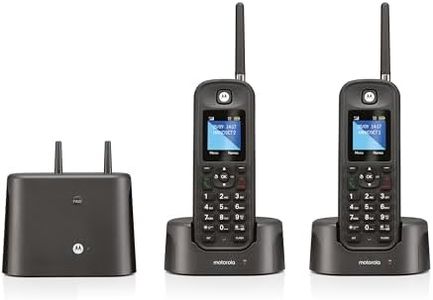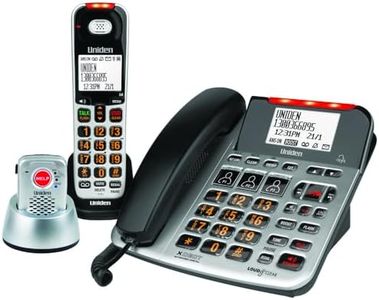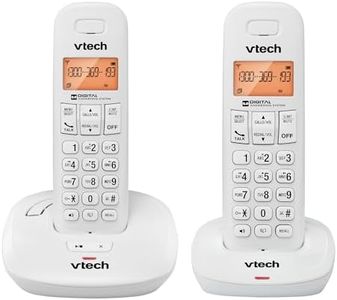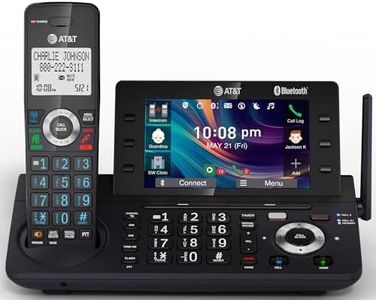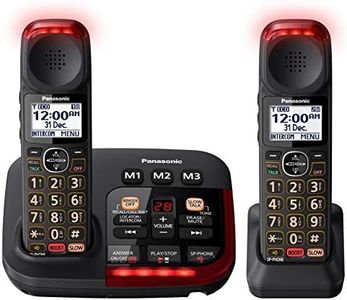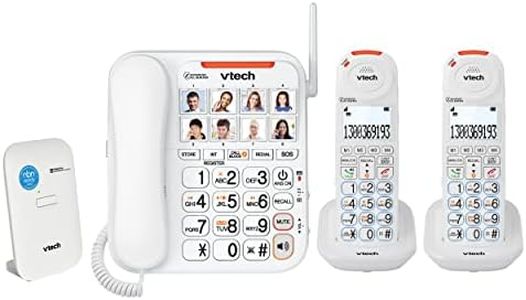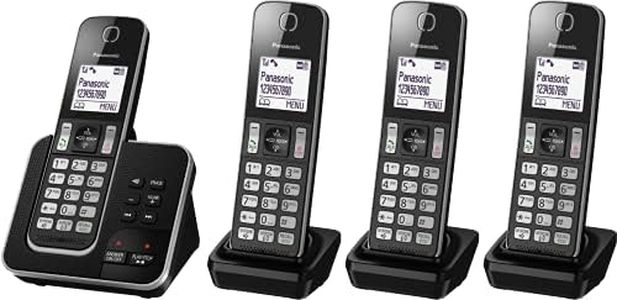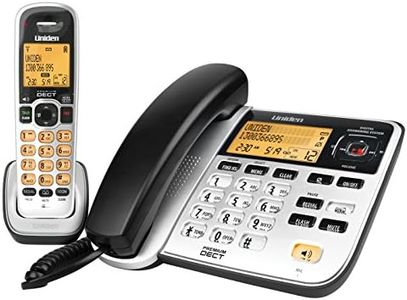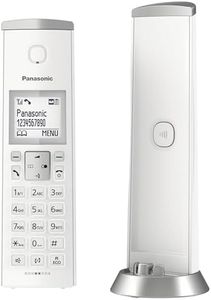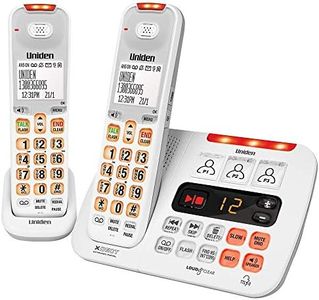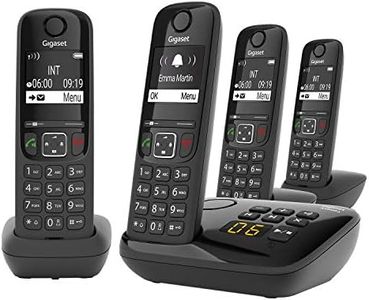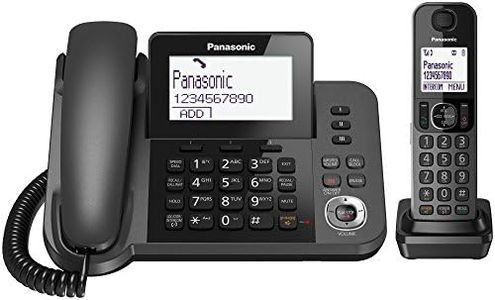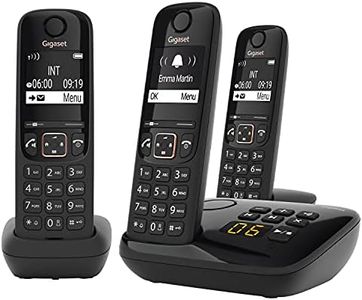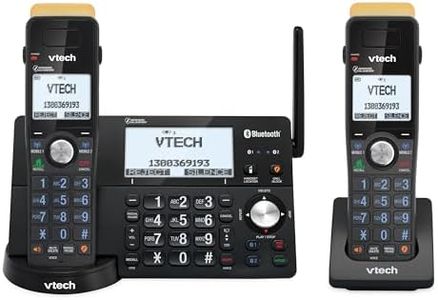We Use CookiesWe use cookies to enhance the security, performance,
functionality and for analytical and promotional activities. By continuing to browse this site you
are agreeing to our privacy policy
10 Best House Phones
From leading brands and best sellers available on the web.Buying Guide for the Best House Phones
Choosing a house phone, also known as a landline phone, might seem simple, but there are several important features that can affect your day-to-day use. It’s helpful to begin by thinking about where and how you’ll be using the phone: Do you need it for long conversations, are you looking for ease of use for someone elderly, or do you want multiple handsets around the house? Considering these factors will help you identify the features you truly need and avoid overcomplicating your purchase. The following key specifications can guide you to pick the best house phone for your needs.Corded vs CordlessThis refers to whether the phone must remain physically connected to its base (corded) or can be carried around the house (cordless). Corded phones are known for reliability—they always have power as they don’t depend on batteries, and generally offer clearer sound. Cordless phones provide flexibility—you can take calls from anywhere within the signal range of the base station, but they rely on rechargeable batteries. If you prioritize the ability to move freely while talking, cordless is for you; if you want a dependable phone that always works—even during power cuts—a corded phone might suit you better. Some phones combine both options for the best of both worlds.
Number of HandsetsThis spec tells you how many separate handsets you get with your phone system. A single-handset system means you have one phone, while multi-handset systems can provide two or more handsets for placing around your home. If you often miss calls because you can’t reach the phone in time, having multiple handsets can make life easier by providing access in every room or floor. Consider the size of your home and your pattern of use to decide how many handsets you need.
Caller ID and Call BlockingCaller ID enables you to see the number or name of the person calling, if available, before you pick up. Call blocking allows you to automatically prevent certain numbers (like telemarketers or spam calls) from ringing through. These features are important for security, convenience, and privacy. If you receive frequent nuisance calls or want to easily screen your calls, choosing a phone with caller ID and call-blocking features is a smart decision.
Answering MachineAn answering machine records voice messages when you’re unable to take a call. Some house phones come with built-in digital answering machines, while others do not. If you often miss calls or need to check messages while you’re away, having an answering machine can be very useful. Think about how frequently you’re not able to answer calls, and whether missing a call (and message) could be problematic for you.
Sound Quality and Volume ControlsSound quality refers to how clear voices are on the line, and volume controls let you adjust the loudness of the ringtone or call. Superior sound quality is important for hearing every word, especially if anyone in your household has difficulty hearing. Many phones have adjustable ringer and conversation volumes, and some offer boosted sound for people with hearing impairments. If you or a family member struggle with hearing, look for phones with loud/adjustable volume and high-clarity audio.
Range (Cordless Only)For cordless house phones, range is the maximum distance you can move from the base station while still being able to make and receive calls. The typical range for most homes is about 50 to 100 meters indoors, though walls and other obstacles can reduce this. If you have a large home or want to use the phone out in your garden or yard, consider a cordless phone with a greater range. Otherwise, a standard range is sufficient for smaller homes or apartments.
Ease of Use and Display FeaturesThis covers how simple the interface is to operate, as well as screen size, button size, and backlighting. Large buttons and clear displays are especially useful for elderly users or anyone with vision difficulties. If someone in your home has trouble with small buttons or reading screens, look for models that emphasize ease of use, including backlit screens and tactile buttons.
